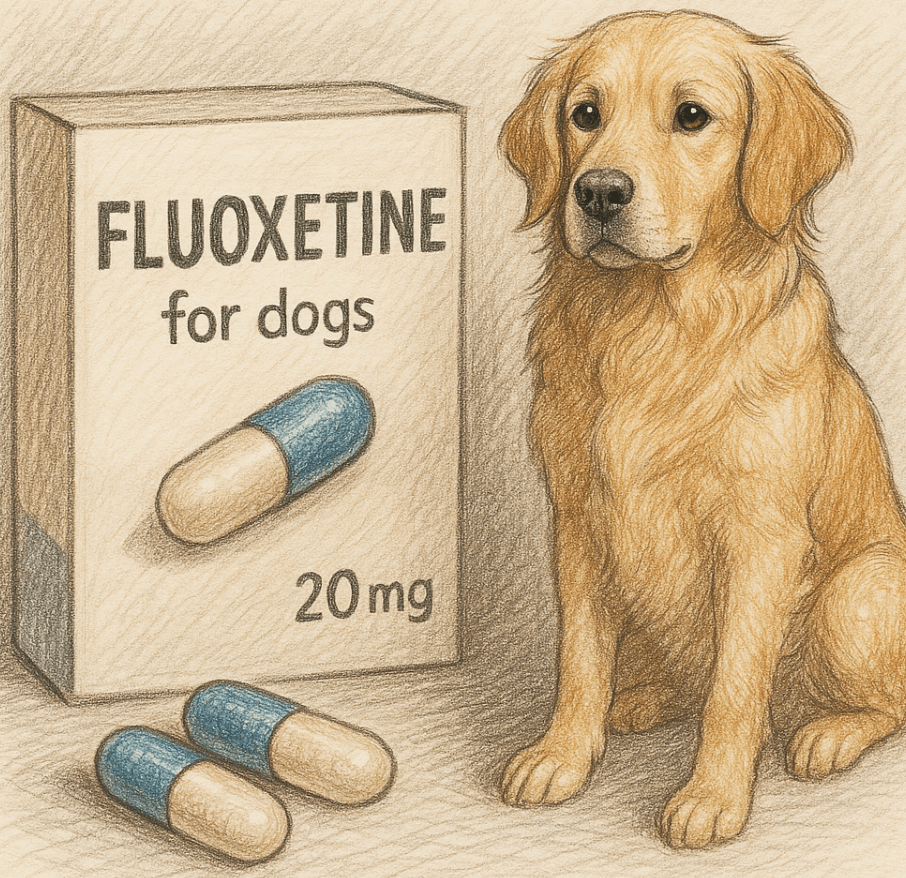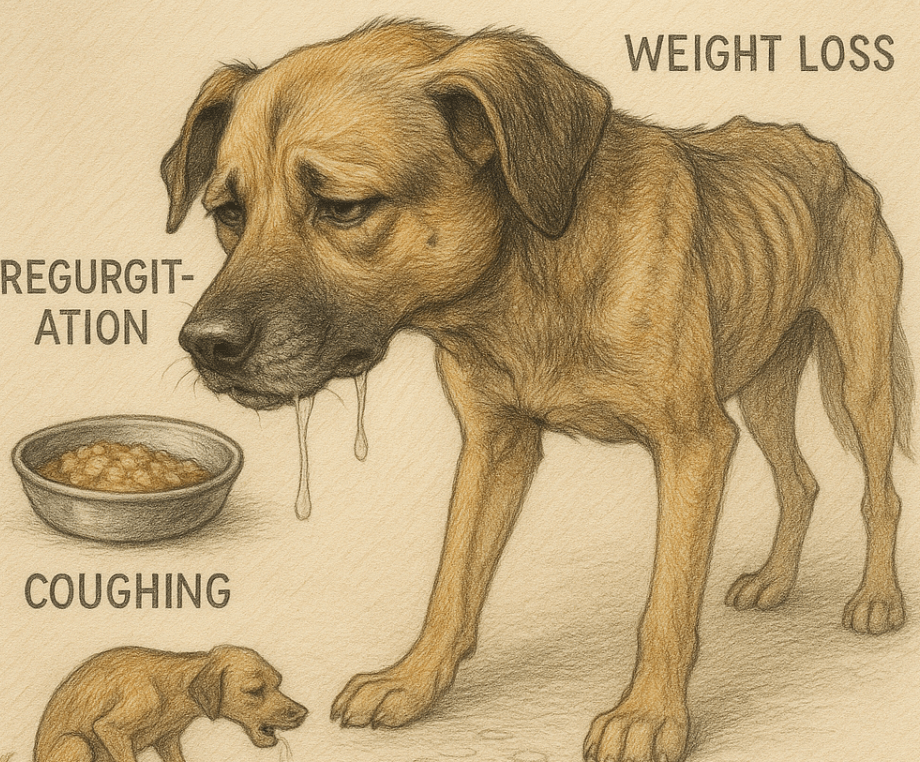Understanding Melanocytoma in Dogs: A Guide for Pet Owners
If you’ve recently heard the term melanocytoma in relation to your dog, you may be wondering what it means and how it could affect your furry friend. Melanocytoma is a type of benign tumor that originates from melanocytes, the cells responsible for producing pigment in the skin, eyes, and other tissues. While the word “tumor” can sound alarming, melanocytomas are generally harmless and common in dogs. However, understanding this condition is crucial for ensuring your dog’s health and well-being.
In this blog post, we’ll explore everything you need to know about melanocytoma in dogs, including its causes, symptoms, diagnosis, and treatment options. Whether you’re a concerned pet owner or simply curious about canine health, this guide will provide clarity and peace of mind.
What Is Melanocytoma? Breaking Down the Basics
Melanocytoma is a term that might seem complex at first glance, but it’s simply a way to describe a specific type of growth that occurs in dogs. To help you better understand this condition, here’s a breakdown of its key characteristics.
Benign Nature:
Unlike malignant melanomas, melanocytomas are non-cancerous and typically do not spread to other parts of the body.Origin of Cells:
These tumors arise from melanocytes, which are responsible for producing melanin, the pigment that gives color to a dog’s skin and fur.Common Locations:
Melanocytomas often appear on the skin, lips, eyelids, or nail beds, though they can develop in other areas as well.Appearance:
They are usually small, dark-colored lumps or bumps that may vary in size and texture depending on the location.Prevalence in Dogs:
Older dogs and certain breeds, such as Schnauzers and Labrador Retrievers, are more prone to developing melanocytomas.
While melanocytomas are generally harmless, it’s important to monitor them closely and consult a veterinarian if you notice any changes. Early detection ensures peace of mind and proper management.
Signs and Symptoms of Melanocytoma in Dogs
Identifying melanocytoma in your dog early can make a significant difference in managing the condition effectively. Here are some common signs and symptoms to watch for, along with insights into how they manifest.
Visible Lumps or Bumps:
The most obvious sign is the presence of raised, pigmented growths on the skin or mucous membranes.Dark Pigmentation:
Melanocytomas are often dark brown or black due to the high concentration of melanin in the affected cells.Localized Swelling:
In some cases, the area around the tumor may appear slightly swollen or inflamed, especially if irritated.No Pain or Discomfort:
Most melanocytomas are painless and do not cause discomfort, though exceptions exist if the growth is in a sensitive area.Changes Over Time:
While melanocytomas are usually stable, any rapid growth, bleeding, or ulceration should be evaluated by a vet immediately.
Recognizing these signs can help you stay proactive about your dog’s health. Regular check-ups and vigilance are key to ensuring your pet’s well-being.
Check this guide 👉The Costs of Dog Tumor Removal: Best 7 Expert Tips!
Check this guide 👉Signs of Brain Tumor in Dogs: Best 7 Health Tips!
Check this guide 👉The Cost of Dog Mammary Tumor Removal: Best 7 Health Tips!

Key Characteristics of Melanocytoma | What It Means for Your Dog |
|---|---|
Benign tumor | Non-cancerous and unlikely to spread |
Originates from melanocytes | Related to pigment-producing cells |
Commonly appears on skin or lips | Easy to spot during routine grooming |
Dark pigmentation | Visible and identifiable upon inspection |
Typically painless | Minimal impact on daily life |
Diagnosing Melanocytoma: What to Expect at the Vet
If you suspect your dog has a melanocytoma, your veterinarian will perform a series of diagnostic steps to confirm the diagnosis. Understanding this process can help you prepare for your visit and alleviate any concerns.
Physical Examination:
The vet will visually inspect the growth and assess its size, shape, and location.Fine Needle Aspiration (FNA):
A small sample of cells may be extracted using a needle to analyze under a microscope.Biopsy Procedure:
In some cases, a biopsy may be necessary to rule out malignancy or confirm the benign nature of the tumor.Imaging Tests:
X-rays or ultrasounds might be used to ensure the tumor hasn’t spread to internal organs, though this is rare for melanocytomas.Consultation and Follow-Up:
After diagnosis, your vet will discuss treatment options and recommend a plan tailored to your dog’s needs.
The diagnostic process is straightforward and designed to provide clarity. Trusting your veterinarian’s expertise ensures the best outcome for your pet.
Treatment Options for Melanocytoma in Dogs
Once diagnosed, melanocytoma is typically easy to manage, and treatment options are often simple and effective. Here’s an overview of the most common approaches veterinarians recommend.
Surgical Removal:
If the tumor is causing irritation or affecting your dog’s quality of life, surgical excision is a safe and effective solution.Monitoring Without Intervention:
For small, stable melanocytomas, regular monitoring may be sufficient, as these tumors rarely pose a threat.Topical Treatments:
In cases of minor irritation or inflammation, topical creams or ointments may be prescribed to soothe the area.Laser Therapy:
Advanced veterinary clinics may offer laser therapy as a minimally invasive option for removing or reducing the tumor.Routine Check-Ups:
Regular follow-up visits ensure the tumor remains benign and doesn’t exhibit any concerning changes over time.
With proper care and attention, melanocytomas are manageable and rarely impact a dog’s overall health. Always consult your vet to determine the best course of action.
Causes of Melanocytoma in Dogs
While the exact cause of melanocytoma isn’t always clear, several factors may contribute to its development. Understanding these potential triggers can help you better grasp why your dog may be affected.
Genetic Predisposition:
Some breeds are more genetically inclined to develop melanocytomas due to inherited traits.Aging Process:
Older dogs are more likely to develop these tumors as part of the natural aging process.Sun Exposure:
Prolonged exposure to sunlight may increase the risk of melanocyte abnormalities in some cases.Hormonal Factors:
Hormonal imbalances or fluctuations could play a role in the formation of pigmented growths.Environmental Influences:
Certain environmental factors, such as pollutants or irritants, might contribute to tumor development.
While the causes can vary, melanocytomas are rarely a cause for concern. Focus on providing a healthy environment and regular vet care to minimize risks.
Preventive Measures for Melanocytoma
Though melanocytoma cannot always be prevented, taking proactive steps can reduce the likelihood of its development or progression. Here are some practical tips to keep your dog healthy.
Regular Grooming:
Routine grooming allows you to spot unusual lumps or bumps early, enabling prompt veterinary intervention.Protect Skin from Sun:
Limit your dog’s sun exposure, especially during peak hours, to reduce the risk of UV-related damage.Balanced Diet:
A nutritious diet supports overall health and strengthens the immune system, helping your dog fight off abnormalities.Routine Vet Visits:
Annual check-ups allow your vet to monitor your dog’s skin and detect any issues before they escalate.Avoid Irritants:
Keep your dog away from harsh chemicals or substances that could irritate their skin or mucous membranes.
By incorporating these practices into your dog’s lifestyle, you can promote long-term health and minimize the risk of melanocytoma.
Emotional Impact on Pet Owners
Discovering a melanocytoma on your dog can evoke a range of emotions, from concern to anxiety. Acknowledging these feelings is an important part of the journey toward peace of mind.
Initial Worry:
Learning about a tumor can be stressful, even if it’s benign, as pet owners naturally want the best for their companions.Reassurance Through Knowledge:
Educating yourself about melanocytoma helps alleviate fears and empowers you to make informed decisions.Bond Strengthening:
Caring for your dog during this time can deepen your bond and reinforce the trust between you.Support Networks:
Connecting with other pet owners or support groups can provide comfort and shared experiences.Focus on Positivity:
Celebrating your dog’s overall health and happiness shifts the focus away from the tumor and toward joy.
Remember, melanocytoma is rarely life-threatening, and your emotional resilience will guide both you and your dog through this experience.
Frequently Asked Questions About Melanocytoma in Dogs
Is melanocytoma cancerous?
No, melanocytomas are benign tumors and do not spread to other parts of the body.
Can melanocytoma turn into melanoma?
While rare, some melanocytomas can transform into malignant melanomas, so monitoring is essential.
Are certain breeds more prone to melanocytoma?
Yes, breeds like Schnauzers, Labradors, and Cocker Spaniels are more likely to develop these tumors.
Does melanocytoma require surgery?
Surgery is only necessary if the tumor causes discomfort or affects your dog’s daily activities.
How can I prevent melanocytoma in my dog?
While prevention isn’t always possible, regular vet check-ups can help detect and manage these growths early.
Living with Melanocytoma: A Positive Outlook for Your Dog
In conclusion, melanocytoma is a common and generally harmless condition that many dogs experience during their lifetime. While the presence of a tumor can be unsettling, understanding its benign nature and manageable treatment options can ease your worries. With regular veterinary care and attentive monitoring, your dog can continue to live a happy, healthy life. Remember, being informed and proactive is the best way to support your furry companion. By staying vigilant and maintaining open communication with your vet, you can ensure that melanocytoma remains a minor concern rather than a major issue. Your dog’s well-being is worth every effort, and together, you can navigate this journey with confidence and love.
Fluoxetine for Dogs: Best 7 Expert Tips! Discover expert advice on using fluoxetine safely, managing side effects, and improving your dog’s mental health effectively.
Megaesophagus in Dogs: Best 7 Expert Tips! Discover expert advice on symptoms, management, and care to improve your dog's quality of life with this challenging condition.
Giant Schnauzer Dog: Best 7 Expert Tips! Discover expert advice on training, grooming, and living with this intelligent, loyal breed for a happy and well-behaved companion.
Dog Jerky Recipe: Best 7 Expert Tips! Discover easy, healthy, and safe homemade dog jerky ideas with expert advice on ingredients, preparation, and storage for your pup's delight.





